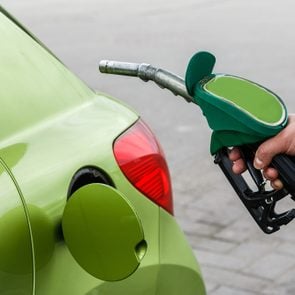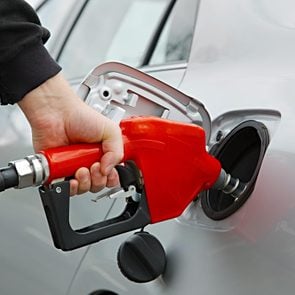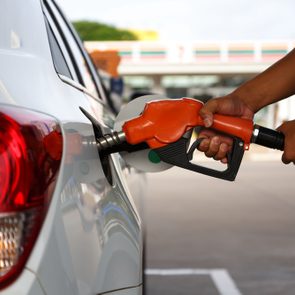This Is What Really Happens When You Put Diesel in a Gas Car
Updated: Nov. 03, 2022

The damage on your car’s engine can be pretty severe.
Accidents happen. Putting diesel into a car that runs on gasoline doesn’t happen that often, but when it does, it can do a lot of damage to your vehicle and your wallet. And with gas prices on the rise, it can be hard to find cheap gas—so you don’t want to be putting any extra strain on your bank account. So what happens if you put diesel in a gas car? Let’s break it down. And once you learn about diesel, find out how gas pumps know when to stop and why car gas tanks are on different sides.
What happens if you put diesel in a gas car?
If you’re worried about doing serious damage to your car by putting in a little diesel, don’t be—it’s pretty hard to fill up your car with diesel if it takes gasoline. Since diesel is thicker, it won’t be able to easily flow into your car. Because of this, you won’t be able to get much diesel into your vehicle, but the little that does get in could make your engine inoperable and may clog up the fuel filter.
The engine may run for a little while longer after you put the diesel in, but only because it is running on the remaining amount of gasoline.
Diesel vs. gasoline: what’s the difference?
To most people, diesel and gasoline might seem like similar substances—for all we know, they both come from a pump at a gas station—but they’re not. “Diesel is a much thicker substance than traditional gasoline and it is ignited by pressure rather than a spark-ignition,” says Jake McKenzie, content manager at Auto Accessories Garage. “Because of its thickness, even a small amount of diesel fuel in a gas vehicle can clog the engine’s fuel injectors, filters, and lines.”
Gasoline is the fuel our vehicles need to get us from Point A to Point B. Petroleum refineries and blending facilities produce this gas for fuel pumps. According to the U.S. Energy Information Association (EIA), a lot of what is made in these plants is unfinished, which means the liquid then needs to be blended with other materials to create the finished motor gasoline that meets what is required for use in spark-ignition engines—the end product that we pump into our cars. Don’t miss these tips on how you can get better gas mileage so you go to the pumps even less.
What should you do if you accidentally put diesel in your car?
In the unlikely event that you did put diesel into your car and you notice your mistake before you start driving, do not start the engine. Get your car towed to a body shop right away so they can pump out the diesel to empty the tank, flush the fuel system, and replace the fuel filters. “Time is of the essence. Even if you don’t drive the vehicle, diesel fuel in the tank will still begin to clog up the fuel system, engine, and injectors,” says McKenzie. This will likely set you back around $400 to $500.
If you do start driving your car with diesel in it, you won’t get very far. A gas engine isn’t able to combust diesel fuel, so your car will move a few miles, make some strange noises, and then come to a stop. McKenzie says it will cause “incredibly costly cylinder and timing issues” in your car’s engine. This type of damage could easily cost you about $4,000 to repair—and sometimes up to $17,000, McKenzie says. In many cases, it can end up costing more than the value of your car.
How to tell the difference between gasoline and diesel at the pump
The nozzle on diesel pumps is typically bigger—so it won’t even fit in your gas tank—it’s normally green, and at a completely separate, clearly labeled pump. Next time you’re at the pump, put your phone away so you’re not distracted, and check to see that everything looks normal before pumping your gas.
Next, read up on these weird car features you didn’t know you had.
Sources:
- J.D. Power: “What Happens if you put Diesel in a Gasoline Car?”
- Jake McKenzie, Auto Accessories Garage
- The U.S. Energy Information Association (EIA): “Gasoline Explained”





















